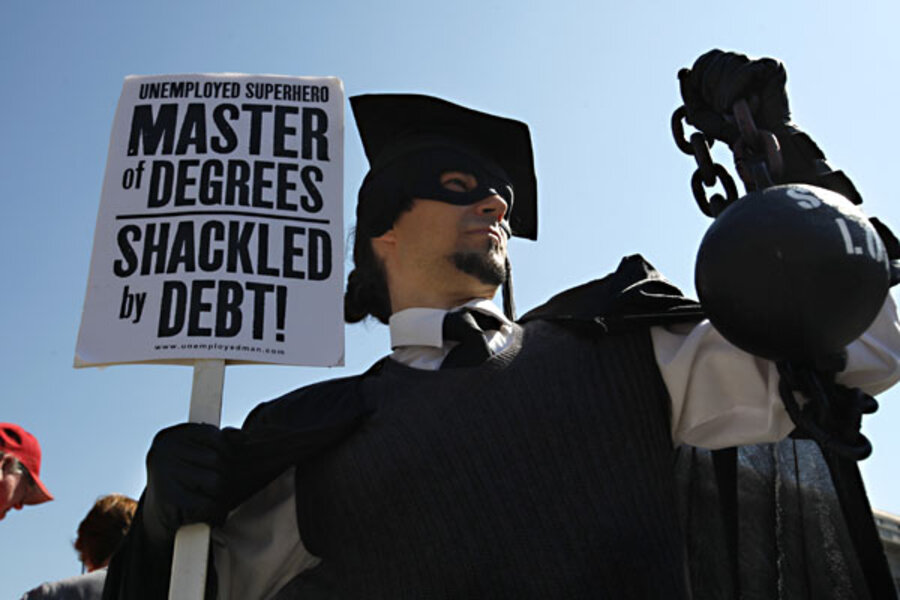Student loan debt hits record 1 in 5 US households
| Washington
With college enrollment growing, student debt has stretched to a record number of U.S. households — nearly 1 in 5 — with the biggest burdens falling on the young and poor.
The analysis by the Pew Research Center found that 22.4 million households, or 19 percent, had college debt in 2010. That is double the share in 1989, and up from 15 percent in 2007, just prior to the recession — representing the biggest three-year increase in student debt in more than two decades.
The increase was driven by higher tuition costs as well as rising college enrollment during the economic downturn. The biggest jumps occurred in households at the two extremes of the income distribution. More well-off families are digging deeper into their pockets to pay for costly private colleges, while lower-income people in search of higher-wage jobs are enrolling in community colleges, public universities and other schools as a way to boost their resumes.
Because of the sluggish economy, fewer college students than before are able to settle into full-time careers immediately upon graduation, contributing to a jump in debt among lower-income households as the young adults take on part-time jobs or attend graduate school, according to Pew.
As a share of household income, the debt burden was the greatest for the poorest 20 percent of households, or those making less than $21,044. In all, 40 percent of U.S. households headed by someone younger than age 35 owed college debt, the highest share of any age group.
"Comparing the debt to their economic resources, the lowest-income fifth of households are the ones experiencing the greatest stresses," said Richard Fry, a senior economist at Pew who analyzed the numbers.
Noting that college enrollment has continued to climb since 2010, Fry added: "Until college enrollment peaks, I would not expect the amount of outstanding student debt to level off."
The study released Wednesday is based on the Survey of Consumer Finances, conducted every three years and sponsored by the Federal Reserve. The numbers are as of 2010, the latest available for that survey. Separate Fed data have pointed to subsequent increases in student loans since 2010 that totaled $914 billion in the April-June quarter, but don't provide demographic breakdowns on who shoulders the biggest burdens.
Both President Barack Obama and his Republican challenger in this year's election, Mitt Romney, have been seeking to court young voters with differing visions on how to address rising tuition and growing college debt. Obama wants to make tax credits for college expenses permanent and expand Pell grants for lower-earning families. Romney says that making government the direct source of federal student loans has not worked and simply drives tuition higher. He stresses the need to curb college costs.
The Pew report found that the richest 20 percent of households, or those with annual income of $97,586 or higher, owed the biggest share of outstanding student debt — 31 percent, up from 28 percent in 2007. The poorest 20 percent of households also saw theirdebt grow, to 13 percent from 11 percent.
The richest households saw significant increases in per-household debt. For those with annual income of $97,586 to $146,791, college debt rose from $25,921 in 2007 to $31,989. For the richest 10 percent, making at least $146,792, college debt increased from $36,033 to $44,810.
Across all households, the average outstanding college debt increased from $23,349 to $26,682. For the poorest 20 percent of households, the average debt rose from $19,018 to $20,640.
In recent years, Americans have cut back on several other types of borrowing such as credit card use, with average household indebtedness falling from $105,297 in 2007 to $100,720 in 2010. Broken down by income levels, however, average total indebtedness for the bottom 20 percent of households by income actually rose from $17,579 in 2007 to $26,779; for the higher income groups, average indebtedness either was unchanged or declined.







